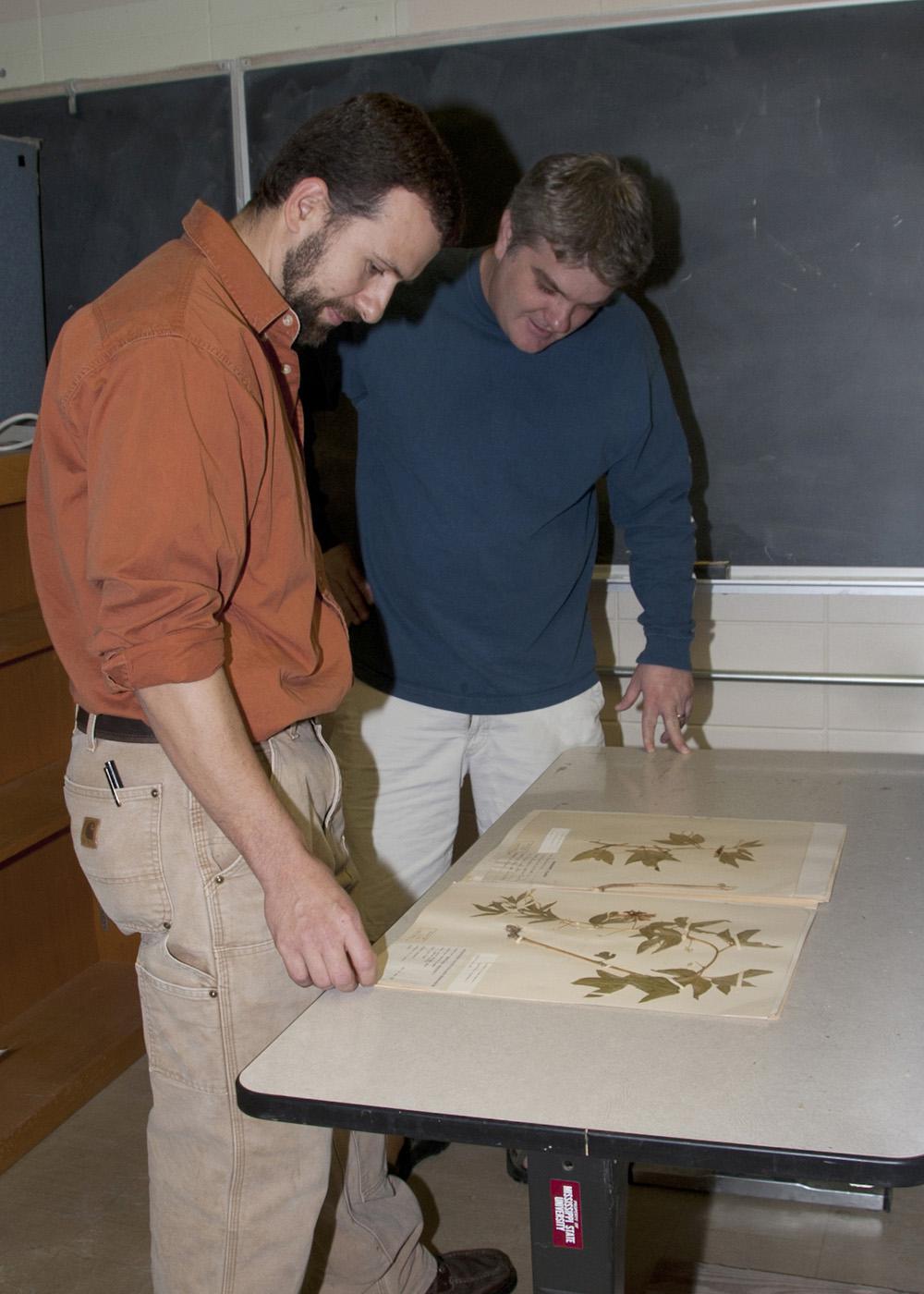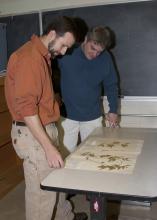Information Possibly Outdated
The information presented on this page was originally released on March 15, 2012. It may not be outdated, but please search our site for more current information. If you plan to quote or reference this information in a publication, please check with the Extension specialist or author before proceeding.
Unique plant hitched ride with travelers to Meridian
MISSISSIPPI STATE -- The Rose Hill Cemetery in Meridian is not only the final resting place of the renowned Gypsy Queen, it is also the first site in North America where a particular type of sedge from Eurasia was found.
A four-man team spent five years gathering data for a floristic survey of Lauderdale County. They discovered the sedge during the study, and now, anyone wanting to know if a certain plant is found in the Meridian area can get their answer in the current issue of the journal Rhodora.
JoVonn Hill, a Mississippi Agricultural and Forestry Experiment Station research associate, worked on the project with Lucas Majure, a Mississippi State University graduate now pursuing a Ph.D. in botany at the University of Florida and working with the Florida Museum of Natural History. The team also consisted of Chris Doffitt in MSU’s Department of Biological Sciences and Terrence Majure, retired from the Mississippi Museum of Natural Science.
From spring 2004 to fall 2009, they documented and described the plants, or flora, found in the county.
“We recorded a total of 1,175 plant species in Lauderdale County,” Hill said. “While doing our survey, we were the first to collect a type of primrose and dovefoot geranium in Mississippi, and we recorded one type of sedge for the first time in North America.”
Majure said the sedge was first found in Meridian’s Rose Hill Cemetery, commonly referred to as the Gypsy cemetery because it is the burial site of the woman known as the Gypsy Queen. Gypsies, also known as Roma, are a nomadic ethnic group who live mostly in Europe.
“The sedge we found is native to Russia and Japan and other parts of Eurasia,” Majure said. “The people who visited her grave for the funeral and afterwards may have unintentionally brought the sedge seed in clothes or on flowers.”
Majure said this speculation has not been proven, and after the sedge was documented at this cemetery, it was found in a few other graveyards in the county. He said these specimens may have been spread by mowing equipment, although it was also found in one other location in the county, an early 20th century campground for vagrants.
The researchers found 186 introduced species in the county and 47 species classified as rare and uncommon species by the Mississippi Natural Heritage Program’s special plant tracking and watch lists.
“In doing these exhaustive searches, we found a lot of plants we didn’t know actually existed in the state and certain species living beyond their known range,” Majure said.
Hill said the flora of only eight of Mississippi’s 82 counties have been comprehensively surveyed. Amite, Yalobusha, DeSoto, Attala, Oktibbeha, Monroe, Grenada and Washington counties are the others with complete floristic surveys.
“Documenting the flora at the county level is important, as it provides insight into the community composition of different habitats and provides a better understanding of the regional flora,” Hill said. “Additionally, surveys like this one provide baseline data to guide future conservation or restoration projects in the region.”
Meridian historically has been a hub of railroad activity, and the railroad and highway system is responsible for the introduction of many of the exotic species found in the county.
“A lot of containers and cargo used plant material as a packing substance, and these often contained seeds,” Hill said. “Many exotic species were introduced as cargo was moved around and unloaded at train depots.”
The team also heavily surveyed major bodies of water and the surrounding areas because they correctly assumed that these areas would have introduced species.
One challenge they had while doing the flora survey was that no guide to the plants of Mississippi exists. They had to use a variety of keys for plant identification, including plant guides from North Carolina and Florida, comparative plant collections in Mississippi and a reference guide known as the Flora of North America.
“Although there are quite a few people interested in producing a flora guide of the state, none exist now, so we had to use a variety of sources to identify the plants,” Hill said.
The study also characterized the climate and topography of the area. Their report explains how researchers chose the individual sites where the flora was surveyed.
Majure said they worked primarily in natural areas outside communities, but since human activity is so prevalent, they did survey many areas within Meridian as well.
“Wherever people go, they tend to take plants with them, and we’re actually adding to the floristic diversity, or number of species of plants you might find in an area, just by moving around,” Majure said. “We focused on areas that are heavily disturbed by human activity. We didn’t look in areas where things were actually planted, like in yards, but we counted plants that had spread beyond their original locations.”
The researchers identified nine plant communities in the county.
“A plant community is an area that has very similar characteristics in terms of soils and water flow,” Majure said. “You can characterize a community by the plants that live there.”
The plant communities in Lauderdale County are anthropogenically disturbed areas, floodplain forests, marshes, mesic forests, river bank, river channel, spring seeps, upland forests and xeric areas.
Anthropogenically disturbed areas are those disturbed by human activity. They include roadsides, urban areas, lawns or construction areas. Floodplain forests are common in the county and are associated with nearly all the perennial rivers and streams.
Marshes are open, unforested areas of shallow, standing water that may or may not dry up during dry times of the year. Mesic forests are also common throughout the county and are found on relatively flat to steeply sloping areas along some of the geologic formations.
River banks and river channel plant communities are associated with the watercourses in the county. Spring seeps and spring-fed peat bogs were found in small areas throughout the county, usually within or along the edges of forest systems. Upland forests are also found throughout the county on loamy, rock or sandy soils on ridge tops or areas with moderate to very steep slopes. Xeric areas are a combination of sandhill and scrub communities.
Find the complete publication online at http://www.bioone.org/doi/abs/10.3119/0035-4902-113.956.365.


